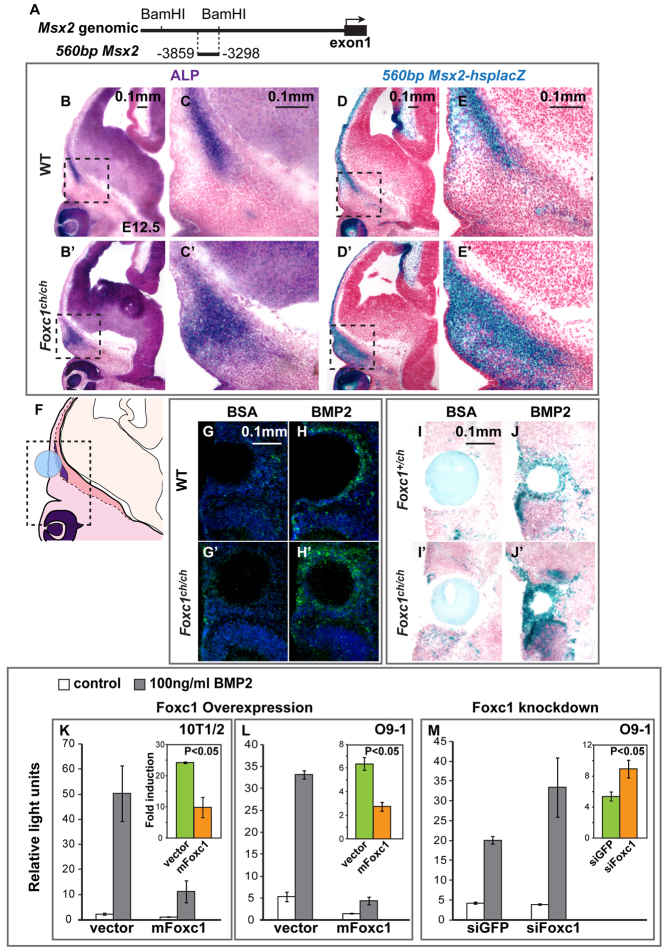Fig. 5.
Foxc1 inhibits the Bmp responsiveness of Msx2 in embryos and cultured cells. (A) Msx2 locus showing 560 bp Msx2 upstream enhancer. (B-E′) ALP and lacZ staining was performed on adjacent sections of E12.5 560bpMsx2-hsplacZ transgenic embryos carrying either the wild-type (B-E) or Foxc1ch mutant allele (B′-E′). Boxed areas are shown at higher magnification on the right. The 560bpMsx2 transgene is sufficient to respond to loss of Foxc1 function. (F-J′) Influence of BMP2-soaked beads on endogenous Msx2 (G-H′) assessed by in situ hybridization and 560bpMsx2-hsplacZ expression (I-J′). The signal intensity in the supraorbital ridge is increased in both the endogenous Msx2 (H versus H′) and the transgene (J versus J′) in Foxc1 mutants compared with control embryos. (K-M) We tested the effect of overexpression (K,L) and siRNA-mediated knockdown (M) of Foxc1 on the Bmp inducibility of the 560bpMsx2-tk-luc construct in 10T1/2 and O9-1 cranial neural crest cells. The insets show the fold change in luciferase expression. The results represent means of three biological replicates. Error bars show one s.d. Significance was assessed using Student’s t-test.

